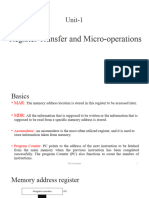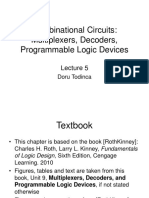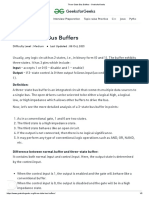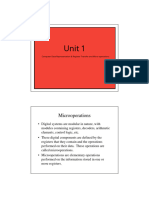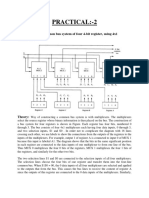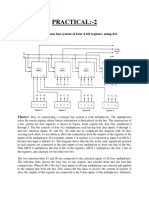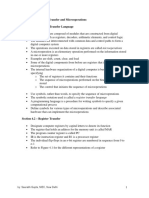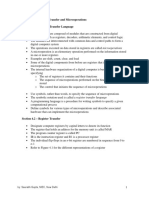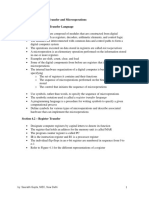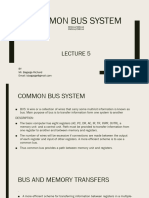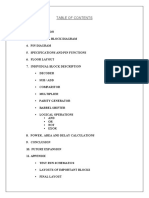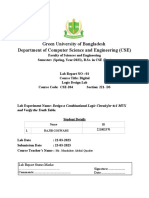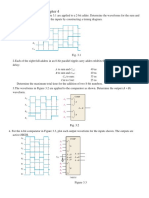0% found this document useful (0 votes)
35 views3 pagesPractical 3
The document outlines a practical implementation of a common bus system for four 4-bit registers using a 2x4 decoder and three-state buffers. It explains the function of three-state gates, which can operate in a high-impedance state to prevent loading effects when connected to a common bus. The design ensures that only one buffer is active at a time, controlled by the decoder, allowing for efficient communication between the registers and the bus line.
Uploaded by
vibhuim1507Copyright
© © All Rights Reserved
We take content rights seriously. If you suspect this is your content, claim it here.
Available Formats
Download as PDF, TXT or read online on Scribd
0% found this document useful (0 votes)
35 views3 pagesPractical 3
The document outlines a practical implementation of a common bus system for four 4-bit registers using a 2x4 decoder and three-state buffers. It explains the function of three-state gates, which can operate in a high-impedance state to prevent loading effects when connected to a common bus. The design ensures that only one buffer is active at a time, controlled by the decoder, allowing for efficient communication between the registers and the bus line.
Uploaded by
vibhuim1507Copyright
© © All Rights Reserved
We take content rights seriously. If you suspect this is your content, claim it here.
Available Formats
Download as PDF, TXT or read online on Scribd
/ 3



















